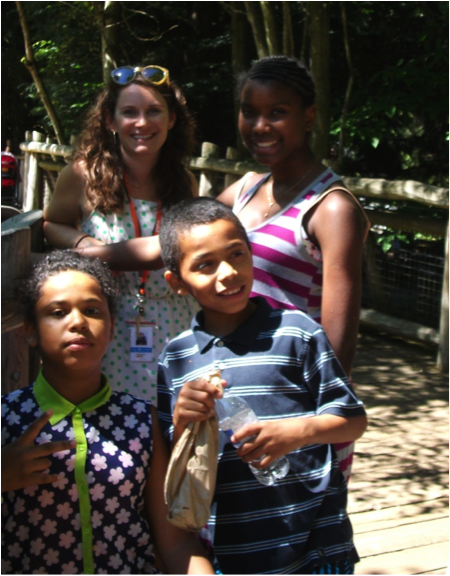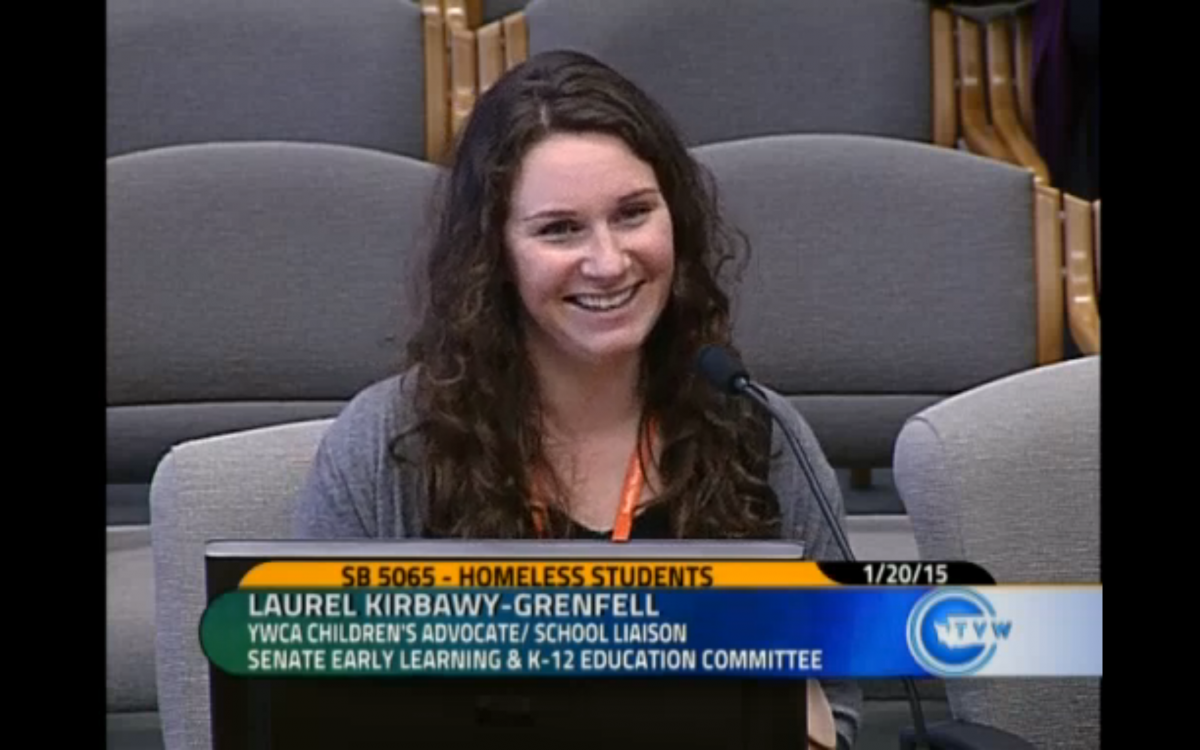Written by Laurel Kirbawy-Grenfell, Children’s Advocate for YWCA Seattle| King | Snohomish
When I tell people what I do for a living, I am almost always met with the same response: “That must be so challenging but so rewarding!” While I get sick of hearing it, they are certainly right. I work as a School Liaison/Children’s Advocate at the YWCA’s Passage Point Program in Maple Valley. Passage Point houses 46 families with varying backgrounds, but nearly all have a history of incarceration, child welfare involvement (CPS), and homelessness. It is my job to help parents navigate the public school system with their children, and to partner with local school districts to provide the appropriate services required for each child’s unique background.
This is why I was so excited to learn about the proposed Homeless Student Stability Act, which would enable school districts to provide more services to homeless students in hopes of decreasing vast gaps in their educational outcomes. The bill went before the Senate’s education committee just last Tuesday, and I was proud to testify and share my experience with lawmakers who can help work toward educational equity for homeless students across the state. You can watch my testimony, as well as testimony from other advocates, here:
I do not consider public speaking to be one of my strengths, but felt this to be an important enough cause to do my best at conveying my belief in this bill. I am glad that I did so, mostly because I found myself surprised at how few others came out to speak in support of the bill. It is easy to think that others are doing the advocacy work that we believe ourselves too busy to do. The unfortunate reality is that when it comes to homeless students, this is not often the case.
Homeless liaisons
Under an existing law called the McKinney-Vento Act, each school district in Washington state is required to designate a “homeless liaison.” This person’s main duties are to identify homeless students in their district, keep an ongoing count of homeless students, and to more broadly help meet unique needs that homelessness creates. A large part of this ends up involving coordinating transportation needs, as homeless students are often bused from much farther away than their fellow students in order to maintain consistent schooling despite frequent moves. Homeless liaisons can be a bridge between students and their teachers who may not understand what behavioral issues such as aggression have to do with the child’s living situation. They can help problem-solve with students’s families to ensure their basic needs like food, clothing, and transportation are met, and that attendance and learning aren’t interrupted.
The problem is that many homeless liaisons are designated this duty in addition to a primary full-time position. They are often transportation coordinators or directors, school counselors, or other administrators, and these important duties allow them minimal time to spend on issues affecting homeless students. In my experience, this overburdening of homeless liaisons causes them to be extremely difficult to coordinate with, resulting in homeless students’s needs (such as getting enrolled in a new school) being put off for long periods of time.
Another result of these liaisons being stretched too thin is that they don’t find time to educate families about their rights under McKinney-Vento. Many parents, homeless or not, are unaware of their children’s educational rights; I’ve found this to be especially for parents whose children qualify for additional rights under McKinney-Vento. Nearly every parent I have worked with was unaware of McKinney-Vento and the accommodations their children are entitled to.

A solution to education gaps
The Homeless Student Stability Act would provide much-needed funding to allow homeless liaisons in many districts statewide to be dedicated in full-time positions to serving homeless students. This means they would have more time to do outreach to homeless families, make sure parents understand their children’s rights, and explain services that may help students who are already behind academically to catch up with their peers. They would also be able to help meet students’s basic needs more effectively, including short-term family housing through grants that would also be made available through the Homeless Student Stability Act.
Over time, the gaps in education for homeless students will be closed as these children grow up and become parents themselves — and with the right support will be enabled to raise their own children in stable and self-sufficient households where learning and growth are not impeded by the stresses of poverty.
What you can do:
- Reach out to your legislators to tell them you would like to see them support the Homeless Student Stability Act (House Bill 1682, Senate Bill 5065).
- Research the Homeless Student Stability Act and how it would help solve disproportionate educational outcomes for homeless students.
- Let your friends and neighbors know about the importance of this bill and supporting homeless students’s rights.
- Share this information and your own thoughts to community members on social media using the #HSSA2015 hashtag.
